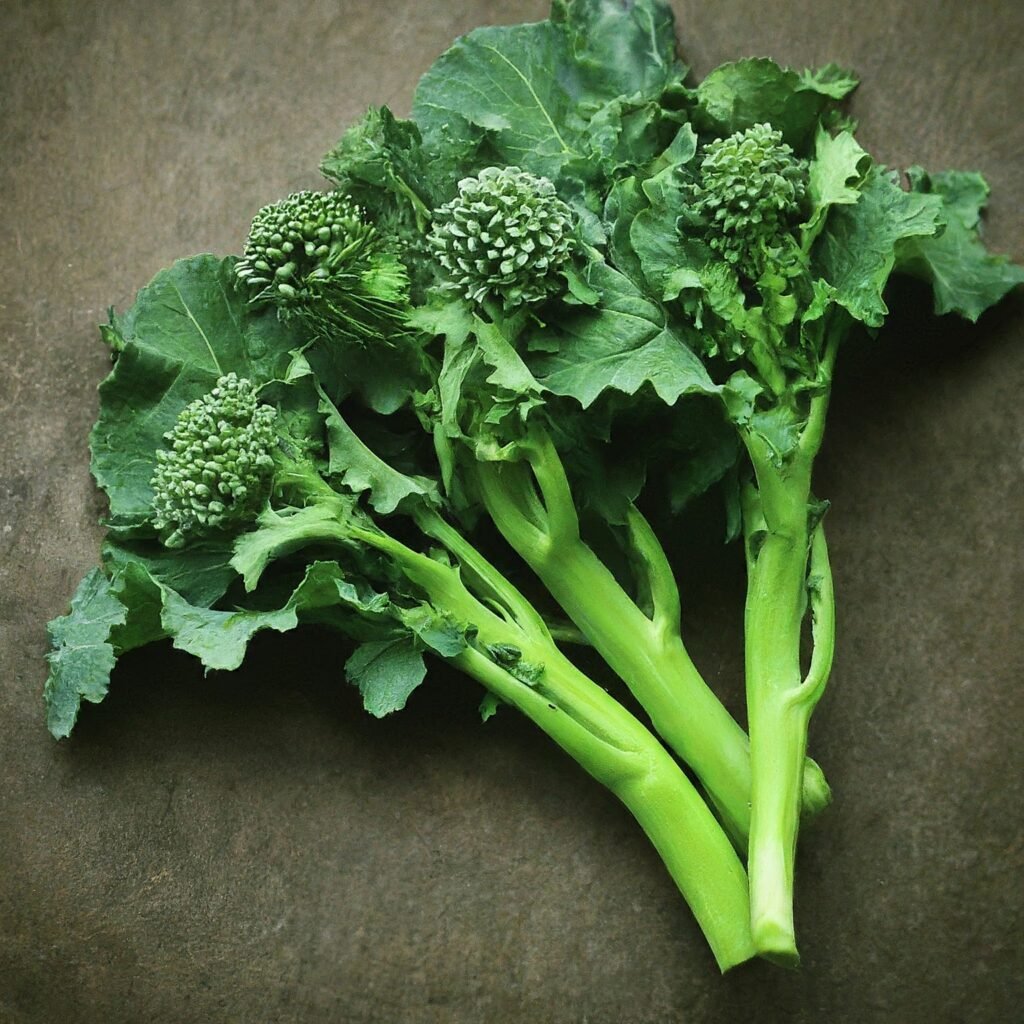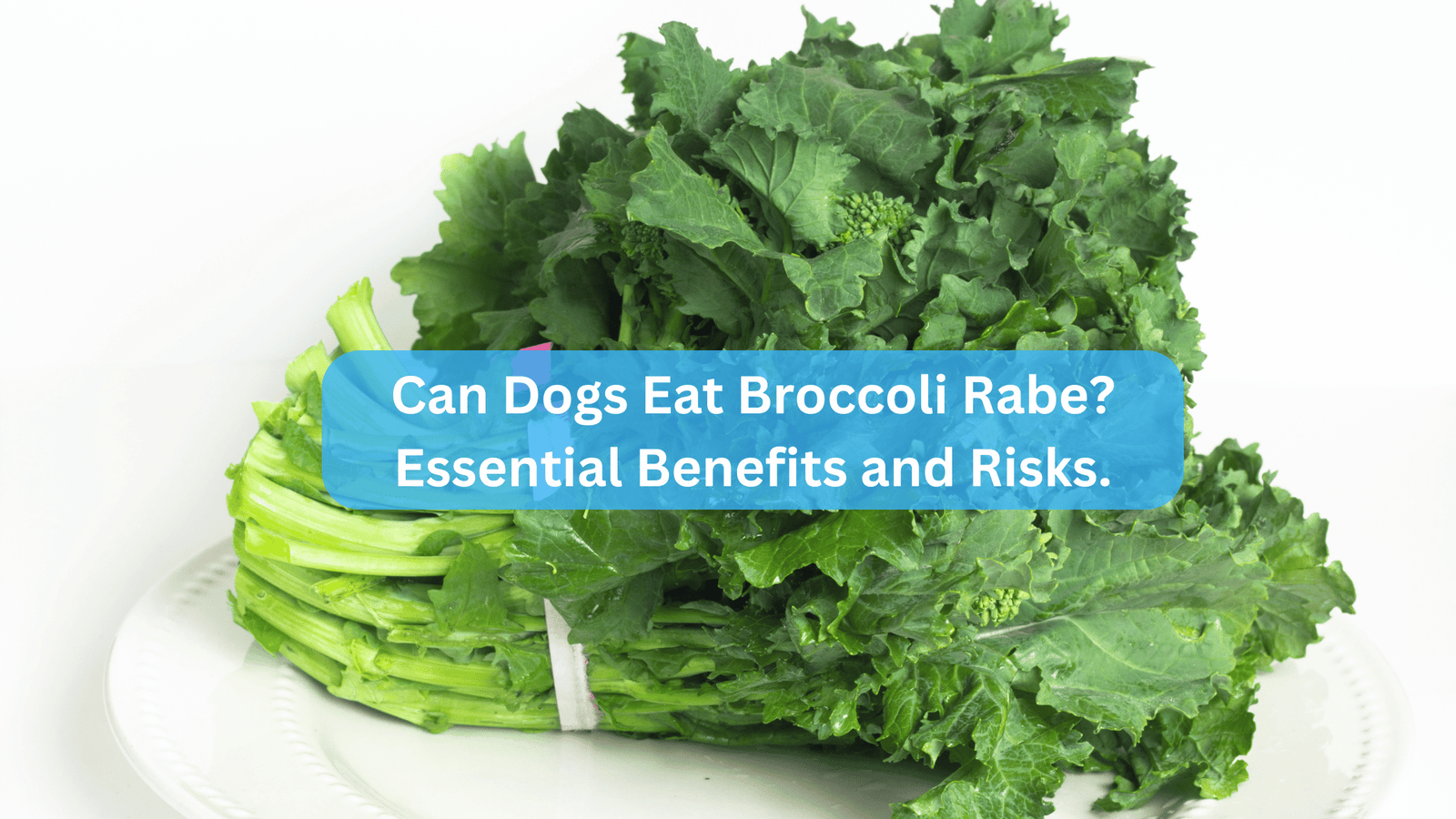Can Dogs Eat Broccoli Rabe? Broccoli rabe, also known as rapini, is a nutrient-dense vegetable that has gained popularity in recent years for its potential health benefits.
As pet owners, we often wonder if the foods we enjoy are safe for our canine companions to consume as well.
In this comprehensive guide, we’ll explore whether dogs can eat broccoli rabe, the potential benefits, and any risks associated with feeding this vegetable to your furry friend.
What is Broccoli Rabe?

Broccoli rabe is a member of the Brassica family, which includes vegetables like broccoli, cauliflower, and kale.
Despite its name, it is not actually a type of broccoli. Broccoli rabe is closely related to turnips and has a slightly bitter, nutty flavor.
It is commonly used in Italian cuisine and can be found in dishes like pasta, salads, and stir-fries.
Can Dogs Eat Broccoli Rabe?
The short answer is yes, dogs can eat broccoli rabe in moderation. Broccoli rabe is a healthy addition to a dog’s diet and provides several benefits.
However, it’s important to introduce it gradually and monitor your dog’s reaction, as some dogs may experience digestive upset if they consume too much.
Benefits of Broccoli Rabe for Dogs
- Liver Detoxification: Broccoli rabe contains compounds that may help support liver function and detoxification.
- Cancer-Fighting Properties: Broccoli rabe is rich in glucosinolates, which have been shown to possess anti-cancer properties in some studies.
- Bone and Heart Health: This vegetable is a good source of vitamins and minerals that support strong bones and a healthy heart.
- Antioxidant Protection: Broccoli rabe is high in antioxidants, which can help protect cells from damage caused by free radicals.
Risks and Precautions
While broccoli rabe can be a healthy addition to your dog’s diet, it’s important to feed it in moderation.
Overfeeding can lead to digestive issues like diarrhea and loose stools.
Additionally, the stalks of broccoli rabe can be tough and may pose a choking hazard, so it’s best to chop them into small pieces before serving.
Are there any risks associated with giving broccoli rabe to puppies?
Raw broccoli rabe can be harmful if eaten in large amounts by puppies due to its high content of goitrogens, which can cause hypothyroidism.
Cooked broccoli rabe is safer for puppies, but it should still be introduced gradually and in moderation, as their digestive systems may be more sensitive.
Always monitor your puppy for any adverse reactions and consult with your veterinarian before adding new foods to their diet.
Can dogs with sensitive stomachs eat broccoli rabe?
Dogs with sensitive stomachs may experience digestive upset when eating broccoli rabe, especially in large quantities.
It’s important to introduce this vegetable slowly and monitor your dog’s reaction.
If you notice signs of gastrointestinal distress, such as vomiting or diarrhea, discontinue feeding and consult your veterinarian.
Cooked broccoli rabe may be easier for sensitive stomachs to tolerate, but it’s still best to feed it in moderation.
How does broccoli rabe compare to other vegetables in terms of nutritional value for dogs?
| Vegetable | Nutritional Value |
|---|---|
| Broccoli Rabe | High in vitamins A, C, K, folate, calcium, and iron. Provides antioxidants and may support liver detoxification and cancer prevention. |
| Broccoli | Also high in vitamins and minerals, but contains isothiocyanates that can cause gastric irritation in dogs if consumed in large amounts. |
| Kale | Rich in vitamins A, C, and K, as well as calcium and iron. Provides antioxidants and anti-inflammatory benefits. |
| Carrots | An excellent source of vitamin A, which supports eye health and immune function. Also contains fiber and antioxidants. |
While all of these vegetables offer nutritional benefits for dogs, broccoli rabe stands out for its potential liver-supporting and cancer-fighting properties due to its high glucosinolate content.
However, it’s important to introduce any new vegetable slowly and in moderation, as individual dogs may have different sensitivities.
How to Feed Broccoli Rabe to Your Dog
- Start with small amounts: Begin by introducing broccoli rabe in small quantities and gradually increase the amount over time.
- Chop or steam: Cut the broccoli rabe into bite-sized pieces or lightly steam it to make it easier for your dog to chew and digest.
- Limit to 10% of diet: Broccoli rabe should not make up more than 10% of your dog’s daily caloric intake.
- Monitor for digestive issues: Watch for signs of digestive upset, such as vomiting or diarrhea, after introducing broccoli rabe. If you notice any adverse reactions, discontinue feeding and consult with your veterinarian.
Also Read: Can Dogs Eat Vienna Sausages? A Comprehensive Guide
Also Read: How to Remove Hard Poop from Your Dog’s Anus at Home
Conclusion
In moderation, broccoli rabe can be a healthy and nutritious addition to your dog’s diet. Its potential benefits include liver detoxification, cancer-fighting properties, and support for bone and heart health.
However, it’s essential to introduce it gradually, chop or steam it, and limit the amount to no more than 10% of your dog’s daily caloric intake.
Always monitor your dog for any adverse reactions and consult with your veterinarian if you have any concerns about feeding broccoli rabe or other human foods to your canine companion.
Sources:
- https://www.candogseatit.com/fruit-veg/rapini
- https://www.kennelcoughhelp.com/articles/can-dogs-eat-broccoli/
- https://dogtime.com/dog-health/dog-food-dog-nutrition/95744-can-dogs-eat-broccoli-rabe-safe
- https://www.akc.org/expert-advice/nutrition/can-dogs-eat-broccoli/
- https://petsreboot.com/can-dogs-eat-broccoli-rabe/?amp=1
- https://www.webmd.com/diet/what-are-the-health-benefits-of-broccoli-rabe

